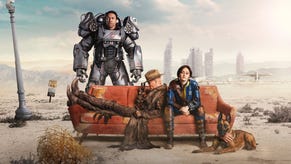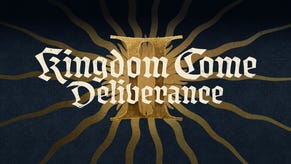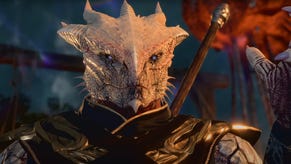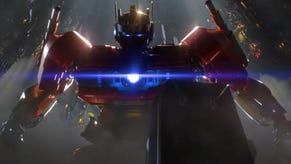Disintegration Interview: how Halo's co-creator concepted a shooter-strategy hybrid
Marcus Lehto co-created Halo, and his latest game is all at once surprisingly close to and a million miles away from Master Chief's adventures.
The biggest marketing feather in Distintegration's cap is the identity of its creator - but in a sense that fact also misleads. When you hear a game is "from the co-creator of Halo" a specific image is conjured up - a fast-paced shooter with a mysterious protagonist ferried around on foot and in vehicles with ultra-tight controls. Disintegration has some of that - but it's also a real-time strategy game, with the player taking control of not only an individual super-soldier of sorts but also a small squad of allies that are directed in a typically RTS style and carry a suite of varied strategic abilities. It's surprisingly cool and fun stuff, as I learned in my first hands-on with the game.
It's true that the Halo connection perhaps goes a little deeper. That series began life as a real-time strategy game, then over time morphed into the action-packed FPS that was a 2001 must-play. That's where those iconic character and vehicle designs came from - they were designed to be viewed and recognized from a classic RTS 'god's eye' view. As it turns out, Disintegration also began life as a much more traditional RTS - as we learned in our chat with Marcus Lehto...
VG247: I've got to say, I was really surprised when I first sat down to play the game and realized what it was. But it's refreshing! There's enough pure shooters in the world, right?
Marcus Lehto: That's what we thought too!
VG247: So, I know everybody is going to ask you about Halo, but... do you feel like there's a direct lineage here from when Halo began life as a real-time strategy game, then gradually morphed into a shooter throughout development?
Marcus Lehto: Well, you know... it was completely unintentional, but it's eeriely similar to how Halo started, yeah. We did actually start this game as a real-time tactics game. It was like a spiritual successor to Myth: The Fallen Lords, one of the first games that I actually started working on with Bungie way back in 1996. That's how Halo started - it was a reskinning of Myth.
But when we started this game, we actually did have a functional real-time tactics game up and running. We built a prototype with units on the ground similar to some of the forms of some of the units we have in the game now. The units were running around on the map and you were this god camera in the sky and you could select and move units around... it was fun. It was okay, and we actually thought it was pretty cool, but we thought - there's a million of them out there like that. Why chase the tail of all these other real-time tactics game. But also why make, on the other side of things, a first person shooter that's like all the other first-person shooters?
But we love shooters. I love action games and in particular I love action games that give the player a lot of agency and investment in what they're doing. That's when we had this idea. I woke up at like three in the morning and I was like 'Ah! I think we're gonna try this!' And that was... we're gonna take the camera that's in the sky and turn it into an actual vehicle, this grav-cycle. We'll put the player into the seat of that vehicle and give them offensive and defensive weapons and allow them, through some new mechanic that we have to invent, to command those units on the ground in a really fluid kind of way.
VG247: So you went down this path after having that path up and running... is that in part because RTS can be quite difficult to make work across all platforms, like console?
Marcus Lehto: We were actually building it with controller in mind. We had it functioning with controller. So we knew it could work for console, and that was our goal. So it was a really natural transition to move into this vehicle that has analog controls and flight mechanics. It felt really great. When we got it working we were like 'Holy crap, this is gonna be different'. We also knew it was going to be really hard to solve. That was the thing we were most concerned about, because we were asking the player to play a first-person shooter and command units on the ground. How are we going to do that in a way that doesn't overwhelm the player with too much complexity?
So we really had to simplify things down to its core essentials, and that meant keeping the mechanics of the game totally in keeping with a first-person shooter. So you're not band-selecting units, you're not micromanaging anybody - you're literally firing a command pulse down onto the ground and that's moving your units from one location to another. You're then popping off unit abilities with the D-Pad in order to keep it within those first-person shooter mechanics, so you always feel like you're throwing a punch with your own weapons or an off-hand punch with your unit weapons. It's a really cool kind of symbiotic relationship between you and your units.
VG247: How are you working to make sure people have the opportunity to get used to the controls? Like you say, it's complicated, but I already felt over the course of that demo that I went from completely bumbling to doing some things much more quickly... but it does feel like to be truly good at the game you'll have to reprogram your brain a bit.
Marcus Lehto: In multiplayer, that's like trial by fire. [laughs] That's a little bit more challenging - but I'm really happy that even within two matches that you're able to understand the core mechanics. Multiplayer is very frenetic, and that's on purpose. We're looking for a really fun experience of five-on-five and just a really crazy simulation combat where there's lots going on because each of those five players has anywhere from two to four units a piece. We've also got crews in multiplayer. You select a crew, each one is themed, and that plays a loose role in combat - and that means you can pick a crew that suits your play style better. If you want to play a little slower you can be the tank-like character that's great for clearing out ground units, while if you really want to play fast, high-pitched, you can select a lighter crew that has healing mechanisms and a marksman rifle, stuff like that.
On the flip side of that, we have the single-player campaign. That's something we're super excited to be working on, and that's actually where we started to focus our attention for the game. On the fiction, on the single-player experience, on making that a really great roller coaster ride for the player. That is a little slower-paced than our multiplayer battles.
VG247: In multiplayer you have these different themes... they're not quite classes, not quite factions, but you know what I mean. They almost function like the factions in a RTS game, really. How does that fold into single-player, given you're playing as these named characters?
Marcus Lehto: In single player, you always play as Romer. He is the primary character. He's an expert gravcycle pilot, but we'll be introducing you to a set of characters who will come along with you, your units on the ground, at the beginning of each mission. It's different per mission. Your gravcycle looks different per-mission, your loadout is different per-mission. One of the characters in the game is a mechanic, and you'll sometimes come back from missions and find that they've installed new weapons or given you a completely different gravcycle altogether for the next mission.
VG247: So you started out with single-player, but multiplayer is the thing that keeps the game alive longer term. How are you thinking about that? Are you just thinking about what you're shipping, or do you have a plan post-launch for multiplayer support?
Marcus Lehto: Even the campaign, it's very true with the multiplayer, but we're building an architecture that'll be good for the shipping game but can be built upon for expansion. It's critical for us to make sure that whatever we're building can be added on to later with new maps, new crews, new multiplayer modes and so on... as well as being able to make additions to the campaign if we want
VG247: RTS and fighting games. Those are the games where balance is most keenly felt. So - how is it balancing this?
Marcus Lehto: For multiplayer specifically, this is why the crews themselves are designed as a gravcycle with a certain load out and a certain number of ground units. We define that, and we can tweak and fine tune that so we could potentially add a unit, remove a unit, change things about them or about the gravcycle load out in order to make sure online play is fair.
VG247: We've talked about that lineage back to your time at Bungie, but are there any other particularly strong influences or inspirations? I have to imagine to end up here you're a big old RTS fan...
Marcus Lehto: You know, I was, and I really enjoyed playing some of the older RTS games like Age of Empires and that kind of thing... but honestly, Myth! I remember when I was working on Myth, it was one of the few games at that time I could play with my friends back where I went to school, we could play online together and it was such a great experience. I really wanted to harken back to some of that. That camaraderie, that fun when you get together as a team.
As far as inspiration is concerned for the fiction of the game, I was really was just observing what was happening around us in the real world. It's really an allegory toward the warning signs of what happens if we allow the intrusion of technology into our lives to a point where it could be a bad thing. It might not be a bad thing - but what could happen if it were taken to an extreme at some point in the future? That's what we're looking at for the foundation of the fiction for this game?
VG247: It's an action game at heart, obviously, but do you view this as a story that really wants to chew on the meat of that as a topic? Because to be real, you get a lot of games that want to pay lip service to harder, more serious themes but don't actually really want to examine them closely.
Marcus Lehto: We're looking primarily at the human side of the characters. They're human people. Their brains are actually taken out and placed into these casings. They're integrated into a robotic armature, but they're still people on the inside. The neat thing about that for our story is that we get to know these people and understand their unique personalities, the conflicts that they have with one another. And that's a really large driving force for all the things that happen throughout the campaign.
VG247: Is it a conscious decision to sort of... well, much as with Master Chief you have an avatar that can be a cipher for pretty much anyone. It could be anybody's brain in that suit. Was that a conscious decision to have a protagonist that isn't generic, but could be more or less anyone?
Marcus Lehto: We wanted Romer to feel like he's got an identity, but you could imagine yourself being within that character. One of the neat things about - and we play with this with a few of our characters, where when you go from human form to being integrated, you can take on a different personality. You can go from male to female, you can change names, you can change your voice, you can change a lot of things. You can reinvent yourself in a different way. And so that's the way some of the characters are being treated.
VG247: And I guess that comes back to your theme; technology as intrusion versus technology as a positive, allowing people to be what they want to be and such...
Marcus Lehto: Yes. But it's also a story of who they also want to ultimately be. They want to become human again; they love the fact that they have these newfound abilities as robotic entities - strength and speed and different forms, not all of them are humanoid, some of them are much different. But they miss being able to have a meal together, to enjoy the smell of coffee, to have a beer, to love one another and have children. Those are the things they want to do again, and so it's critical for them that they hold on to that sense of humanity and fight for it. But our enemies, they've left all that behind - they're on this post-humanistic trajectory that's going to decimate what remains of humanity. It's really important for our crew to fight against that.



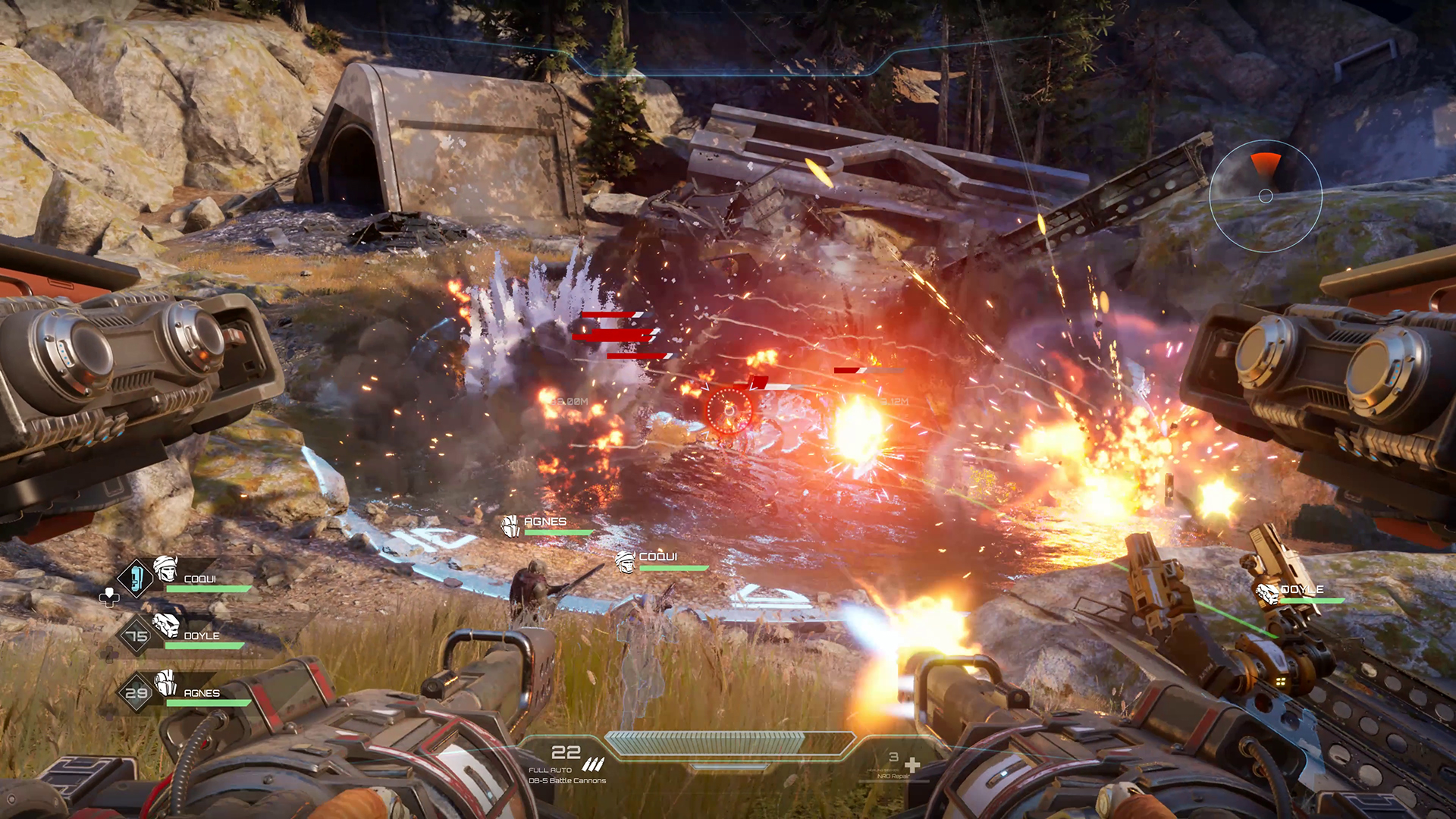

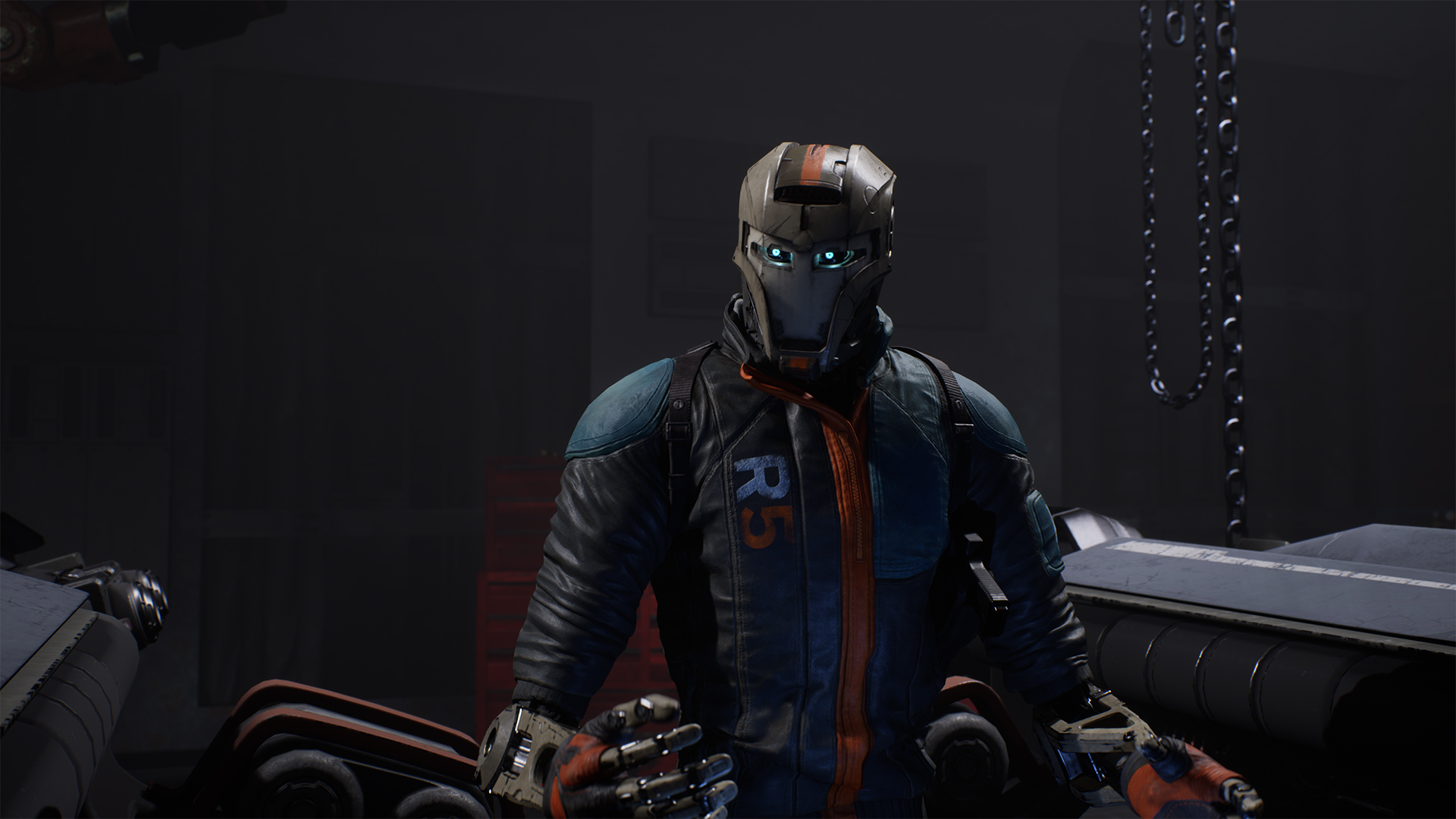

.jpg?width=291&height=164&fit=crop&quality=80&format=jpg&auto=webp)
